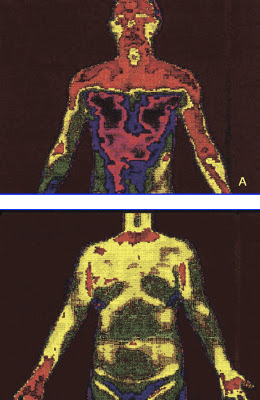Results: In the hot-plate analgesia test, sympathectomized rats increased their hot-plate latency time compared with that of sham-operated rats. Density of calcitonin gene-related peptide immunoreactive fibers in sympathectomy side of the lumbar dura mater decreased to 45.5% compared with the contralateral side. The number and size of calcitonin gene-related peptide immunoreactive cells in dorsal root ganglia showed no difference between sympathectomized and contralateral side.
Conclusion: Sympathectomy increased the pain threshold and made the sympathectomized rats hypesthetic. A large numbers of sensory fibers innervated the lumbar dura mater via L2-L3 sympathetic nerve in rats. Sympathectomy reduced the number of these nerve fibers in the lumbar dura mater. Sympathetic nerves may play an important role for low back pain involving the lumbar dura mater.
http://journals.lww.com/spinejournal/Abstract/1996/04150/An_Anatomic_Study_of_Neuropeptide.4.aspx
